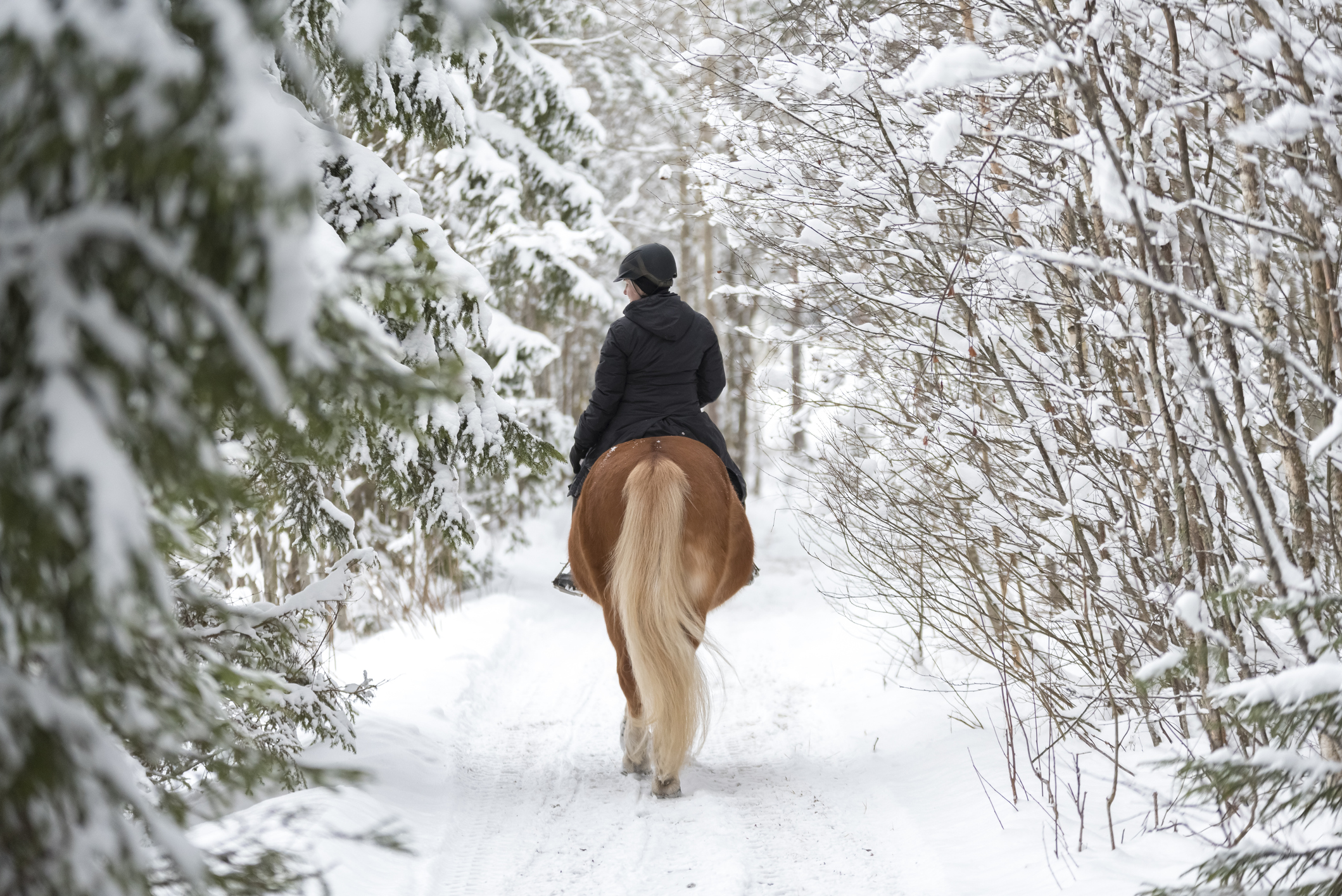Get the most out of winter rides
- January 1, 2024
- ⎯ Christine Barakat
1. The key to keeping yourself warm in the saddle during winter is to dress in layers. For the base layers, choose a fabric that wicks moisture away from your skin. Most activewear sold today has this capacity. For outer layers, look for fabrics that keep you warm but “breathe” to release moisture as necessary. If you’re riding, make sure your topmost layer has a zipper. You can’t pull a solid sweatshirt off over your helmet if you get too warm during a ride.

2. Frozen toes are a misery while you’re riding. Treat yourself to some terrific socks this year. You’ll want them thin enough to allow “wiggle room” in your boots, but made from a warm and breathable fabric. Serious hikers are fanatics about socks. Eavesdrop on their online discussion for suggestions. If temperatures are regularly below freezing in your area, you may also want to invest in a pair of insulated winter riding boots.
3. A fleece cooler draped over your horse’s hindquarters, pulled around your waist then tucked under your legs can help keep you both toasty during warm-up and cool-down periods.
4. Be aware of the state of the footing you’re riding on. Fast work on frozen ground can lead to hoof bruising and significant footsoreness. Hard, frozen ground “rings” as a horse trots or canters across it, rather than producing a more muffled sound. When footing is frozen, stick to a walk.
5. Leaving a hot, sweaty horse standing in a cold stall can lead to him catching a chill, so after a hard ride in winter, you’ll need a thoughtful cooling-out routine. Walk for the last 10 or 15 minutes of the ride to allow the heat built up in his muscles to dissipate. Dismount and loosen the girth, but don’t remove the saddle until you have a wool or fleece cooler on hand to toss over the damp area immediately. Walk him to prevent his muscles from cramping, checking underneath the cooler periodically to see if he’s dry. Rubbing the area with a towel briskly can speed up that process. Once you are sure his body temperature has returned to normal and that he’s dry, you can put his regular blanket on him and turn him out or return him to his stall.
Don’t miss out! With the free weekly EQUUS newsletter, you’ll get the latest horse health information delivered right to your in basket! If you’re not already receiving the EQUUS newsletter, click here to sign up. It’s *free*!





